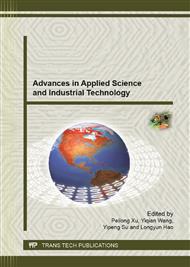[1]
Yanjin Jiang, Jingjin Zhao. Staff service innovation behavior practice [J]. Human Resource Development of China, 2009(5): 54-56. (in Chinese).
Google Scholar
[2]
Zhaolan Meng. Human emotions[M]. Shanghai People's Publishing House, 1989: 23~42. (in Chinese).
Google Scholar
[3]
Russell J A, Feldman B L. Core affect, prototypical emotional episodes, and other things called emotion: Dissecting the elephant. Journal of Personality and Social Psychology, 1999, 76: 805~819.
DOI: 10.1037/0022-3514.76.5.805
Google Scholar
[4]
ALLENDG, SHORELM, GRIFFETHRW. The role of perceived organizational support and Supportive Human Resource Practices in the Turnover Process[ J]. Journal of Management, 2003, 29(1): 99- �118.
DOI: 10.1177/014920630302900107
Google Scholar
[5]
Guohua Xu, Dongtao Yang. Supportive Human Resource Practice Management and employee emotional commitment[J]. Economic Science, 2004(6): 88-90. (in Chinese).
Google Scholar
[6]
SCOTTS G, BRUCER. A Determinants of Innovative Behavior: A Path Model of Individual Innovation in the Workplace [ J]. Academy of Management Journal, 1994, 37(3): 580-607.
DOI: 10.2307/256701
Google Scholar
[7]
West M A. Innovation in Top Management Teams[ J]. Journal of Applied Psychology, 1996, 81(6): 680- �693.
Google Scholar
[8]
Denier, E. Subjective well - being: The science of happiness, and a proposal for a national index[J]. American Psychologist, 2000, 55(1): 34- 44.
DOI: 10.1037/0003-066x.55.1.34
Google Scholar
[9]
PUGH S D. Service with a smile: Emotional contagion in the service encounter [J]. Academy of Management Journal. 2001, 44: 1018-1027.
DOI: 10.5465/3069445
Google Scholar
[10]
TSAI W C. Determinants and consequences of employee displayed positive emotions.
Google Scholar
[11]
Isen.A. M. Positive affect, cognitive processes, and social behavior. Advances in experimental social psychology[M]. San Diego, CA: Academic Press, (1987).
DOI: 10.1016/s0065-2601(08)60415-3
Google Scholar
[12]
Ashby,F. G., Isen,A. M., Token,A. U. A neuropsychological theory of positive affect and its influence on cognition[J]. Psychological Review, 1999, 106: 529-550.
DOI: 10.1037/0033-295x.106.3.529
Google Scholar
[13]
Lyubomirsky,S. King,L. Diener,E. The benefits of frequent positive affect: Does happiness lead to success?[J]. Psychological Bulletin, 2005, 131, 803-855.
DOI: 10.1037/0033-2909.131.6.803
Google Scholar
[14]
Ying Li, Zhenhua Wang. Supportive human resource practices, self-efficacy and innovative behavior[J]. Science and Technology Management Research, 2009(10): 479-490. (in Chinese).
Google Scholar


